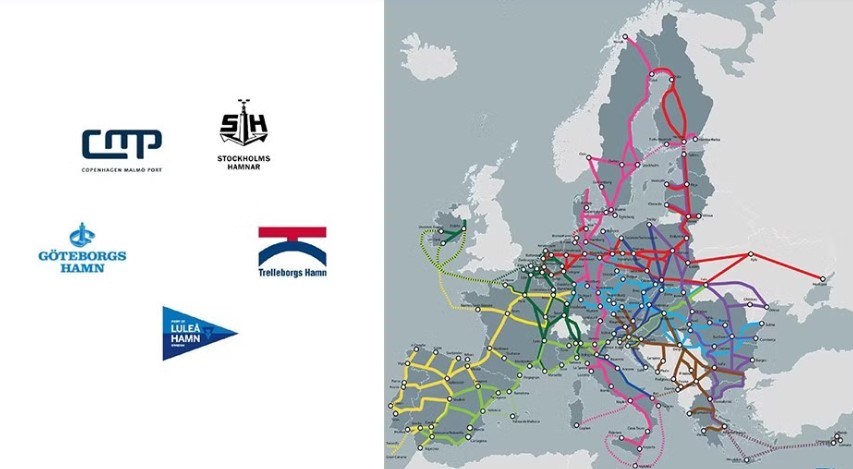Sweden’s core ports have welcomed the revised regulation on European Union guidelines for the development of the trans-European transport network (TEN-T) adopted by the European Council in mid-June.
All five of Sweden’s core ports retain their status in the network and thereby continue to play vital roles in the EU’s increased efforts to build a sustainable and robust European transport network.
Copenhagen Malmö Port (CMP), the Port of Gothenburg, Port of Luleå, Ports of Stockholm and Port of Trelleborg have been designated as core ports by the European Commission since 2013. This means that they are classed as being among the most important ports in Europe, playing a key role in the development of the European transport corridors thanks to their strategic significance to EU transport infrastructure.
The European Commission regularly reviews and updates the TEN-T network in order to adapt to changing transport needs and priorities. Among other things, this means that ports that have seen declining use or a decline in strategic significance risk being downgraded or removed from the network entirely.
While the new TEN-T Regulation, which entered into force on June 13, 2024, contains a number of significant amendments concerning ports on the Baltic Sea, the Swedish core ports retain their status.
“I am delighted that all five core ports will retain their status in the network. This demonstrates our strength and that we continue to play a crucial economic role as nodes for trade and Sweden’s competitiveness. Over half of all Swedish imports and exports go through Sweden’s core ports. It is also proof that the significant investments made in sustainable solutions at all Swedish core ports – such as using shore-side electricity for vessels in port and improved waste management and energy efficiency – are of the utmost importance, as they support the EU’s environmental objective of sustainable transport strategies,” Magdalena Bosson, CEO of the Ports of Stockholm, said.
The EU’s trans-European transport network is a key instrument for planning and developing a coherent, efficient, multimodal, and high-quality transport infrastructure across the EU. The network comprises railways, inland waterways, short sea shipping routes and roads linking urban nodes, maritime and inland ports, airports and terminals.
Among other things, the new regulation requires greater efforts to increase the use of more sustainable modes of transport and improvements to the multimodality of the transport network. Furthermore, in future the status of a port in the TEN-T network will also be judged on its contribution to the green transition, rather than simply on cargo and passenger volumes.
“All five core ports have well-developed infrastructure and are integrated with road and rail networks. This contributes to the multimodality of the European transport network, making it possible to combine different modes of transport, thus improving logistical efficiency. That said, we still need to future-proof the ports’ transport infrastructure, not only to meet the EU’s requirements for efficiency, sustainability and competitiveness but also to ensure the preparedness of critical infrastructure. Having once again demonstrated our significance at European level, we hope to see more national political investments and initiatives designed to support sustainable, innovative investment in the Swedish core ports,” Barbara Scheel Agersnap, CEO of Copenhagen Malmö Port, commented.
Following the review of the TEN-T Regulation, the port in Copenhagen, which is also managed by CMP, retained its core port status in the TEN-T network as well. The European Commission proposed a review of the TEN-T network in 2013 as part of a package of legislative measures for efficient and green mobility. The purpose of the revised TEN-T Regulation is to create a solid foundation for the development of the EU’s transport infrastructure until 2050.
The TEN-T network will be developed or upgraded step by step with the new regulation setting clear deadlines for its completion in three phases: until 2030 for the core network, 2040 for the extended core network and 2050 for the comprehensive network.

